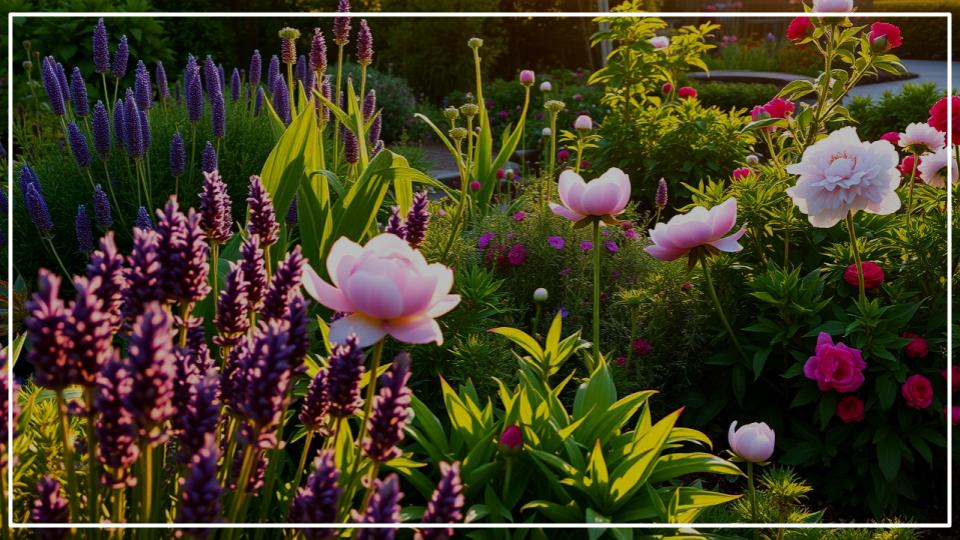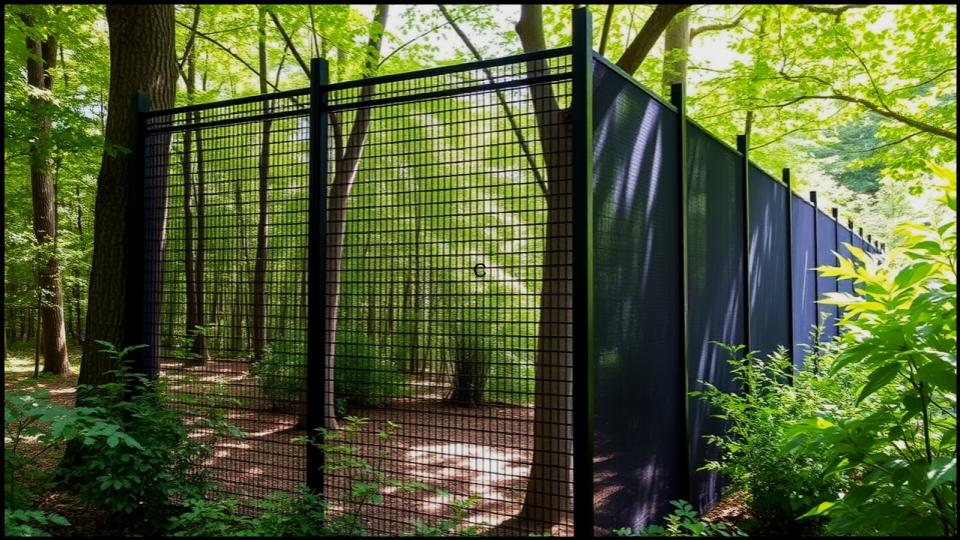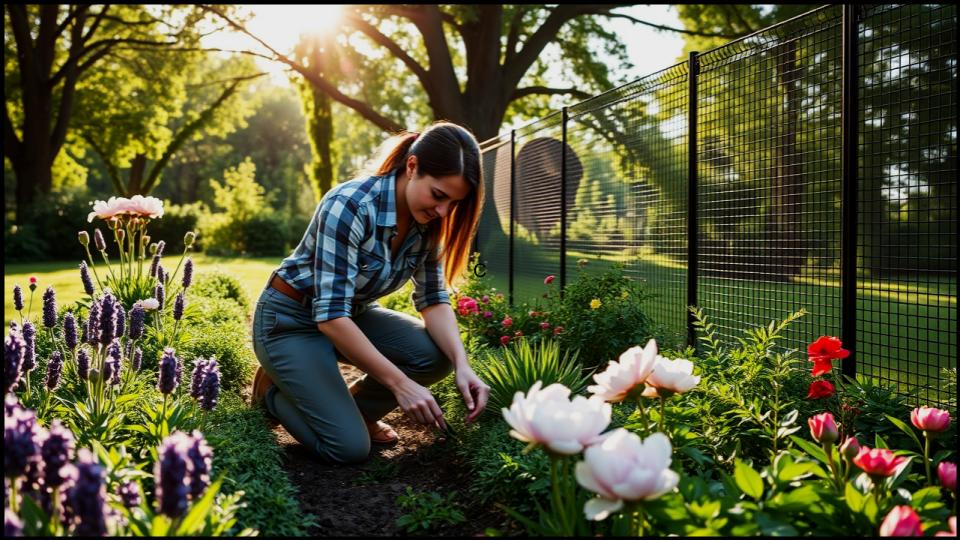
There’s a unique kind of heartache that comes from waking up to find your prized hostas nibbled to the nub or your tender tulips vanished overnight. For gardeners, the quiet grace of a deer in the wild quickly fades when that same deer decides to make a salad bar of your backyard sanctuary. It can feel like a losing battle, but I assure you, it’s not. With a thoughtful, layered approach, you can create a stunning garden that coexists peacefully with your wild neighbors. This guide will walk you through the most effective strategies for protecting your garden from deer, focusing on the elegant, long-term solution of deer-resistant plants. Let’s cultivate a garden that is both beautiful and resilient.
Quick Tips for a Deer-Free Garden
- The Gold Standard: The only 100% effective method is a well-installed fence that is at least eight feet high.
- Repel and Rotate: Use scent- or taste-based deer repellent sprays, but be sure to switch products every few months to prevent deer from getting used to them.
- Plant Smart: The foundation of a low-stress garden is choosing plants deer naturally avoid due to their scent, texture, or taste.
- Think in Layers: Place your most deer-tempting plants (like roses or tulips) closer to your house, where activity is higher, and surround them with a “barrier” of less palatable plants.
Understanding the Challenge: Why Deer Target Your Garden
Before we can outsmart them, we must understand them. White-tailed deer are creatures of habit and opportunity. Their expanding populations and the shrinking of their natural habitats mean our gardens, with their buffet of tender, well-watered plants, are incredibly appealing. According to a Cornell University fact sheet, a single deer can consume several pounds of vegetation each day.
In my own garden, I’ve observed that deer are most active at dawn and dusk, using familiar paths to browse. They are drawn to young, succulent new growth and plants that have been fertilized, which are especially rich in nutrients. Their preferences can change seasonally; what they ignore in summer might become a target during a harsh winter when other food is scarce. Recognizing these patterns is the first step in developing an effective defense.
The Ultimate Solution: Installing a Deer-Proof Fence
Let’s be perfectly clear: If you want guaranteed protection for a specific area, especially a vegetable garden or a collection of prized roses, a physical barrier is your best and only bet. While it’s an investment, a proper deer-proof fence eliminates the daily worry and allows you to grow whatever you please within its perimeter.

Fencing Materials and Styles
The most common and effective fences are made from woven wire or a strong, UV-resistant polypropylene mesh. While wood or vinyl privacy fences work, deer can be surprisingly athletic jumpers. The key, as experts from the University of Vermont Extension confirm, is height.
The Critical Element: Height and Installation
A deer fence must be at least eight feet tall. Anything lower, and an adult deer can clear it with ease. It’s also crucial to ensure there are no gaps at the bottom. Deer are just as likely to wiggle under a fence as they are to jump over it, so the base should be securely anchored to the ground. For a truly determined herd, a slanted or double fence can create a visual barrier that deer are unwilling to challenge.
Tools and Materials for a Basic Mesh Fence
- 8-foot or taller heavy-duty metal or wooden posts
- 8-foot-tall polypropylene deer fencing roll
- Post driver or sledgehammer
- Heavy-duty zip ties or fence staples
- Tensioning wire (for the top and bottom) and gripples
- Ground stakes
A Layered Defense: Using Effective Deer Repellent
For gardens where a tall fence isn’t practical or desired, repellents are the next line of defense. These work by making plants taste or smell unpleasant to deer. A study from the University of Minnesota Extension found that a simple homemade spray of eggs and water was one of the most effective repellents, as the sulfurous smell mimics the scent of a predator.
There are two main types of commercial deer repellent:
- Contact Repellents: These are applied directly to the plants and work by tasting bad. They often contain ingredients like hot pepper wax or bittering agents. They need to be reapplied after heavy rain and to new growth.
- Area Repellents: These work by smelling bad and are placed in and around the garden. They can contain anything from predator urine to putrescent egg solids and dried blood.
A common mistake I see gardeners make is applying a repellent once and expecting it to last all season. For repellents to work, you must be diligent, applying them every few weeks and after rain. My go-to strategy is to rotate between a taste-based and a scent-based repellent to keep the local deer guessing.
The Gardener’s Best Tool: Planting with Deer-Resistant Plants
Here is where the art and science of gardening truly come together. The most sustainable and beautiful way to deter deer is to create a landscape filled with plants they naturally avoid. This is the cornerstone of protecting your garden from deer for the long haul. No plant is 100% “deer-proof”—a starving deer will try anything—but a garden built around deer-resistant plants is far less likely to be damaged.
So, what makes a plant deer-resistant? Deer tend to avoid plants with:
- Strong Scents: Think aromatic herbs like lavender and rosemary.
- Fuzzy or Hairy Leaves: The texture of lamb’s ear (Stachys byzantina) is a classic example.
- Prickly or Thorny Stems: Barberry and holly are excellent choices.
- Tough, Leathery Leaves: Plants like boxwood are not appealing.
- Toxicity: Daffodils, foxgloves, and poppies are poisonous to deer.

My Favorite Deer-Resistant Perennials
Perennials form the backbone of a garden, and thankfully, many of the most beautiful ones are unappealing to deer.
- Peonies (Paeonia): These lush, romantic blooms are completely ignored by deer. They are a long-term investment that pays off with decades of beauty.
- Bleeding Heart (Dicentra spectabilis): The delicate, heart-shaped flowers are a shade garden staple, and their foliage is toxic to deer.
- Russian Sage (Perovskia atriplicifolia): With its silvery foliage and plumes of lavender-blue flowers, it offers a long season of color and a strong scent that deer despise.
- Lavender (Lavandula): I always find a place for lavender. Its delightful fragrance is a natural repellent, and it thrives in sunny, well-drained spots.
- Ornamental Grasses: Most ornamental grasses, from the airy Pink Muhly Grass (Muhlenbergia capillaris) to the stately Feather Reed Grass (Calamagrostis), are ignored by deer and add wonderful texture and movement to the garden.
Stunning Deer-Resistant Shrubs for Structure
Shrubs provide essential structure and year-round interest. Choosing resistant varieties is key to a low-maintenance landscape.
- Boxwood (Buxus): The quintessential hedge plant, its bitter, leathery leaves are of no interest to deer. Perfect for creating elegant borders and formal shapes.
- Juniper (Juniperus): Available in a huge range of shapes and sizes, from groundcovers to tall trees, junipers have a prickly texture and strong scent that keeps deer moving along.
- Barberry (Berberis): While some varieties can be invasive depending on your region, the thorny branches of barberry make it an excellent barrier plant. The deep burgundy and chartreuse varieties add fantastic color.
Your Beautiful, Resilient Garden Awaits
Creating a garden that thrives despite the presence of deer is not about finding a single magic bullet. It’s about building a thoughtful, integrated defense. Start with the strongest foundation—a smart selection of beautiful deer-resistant plants. Layer in repellents for added protection, and where necessary, invest in a fence to guard your most precious crops.
Don’t let the frustration of deer damage discourage you. Instead, see it as an opportunity to become a more creative and knowledgeable gardener. By working with nature, you can cultivate a landscape that is not only a joy to behold but also a testament to your skill and passion.
Read More
Keep Your Houseplants and Garden Alive While You Travel—No Tech Required
